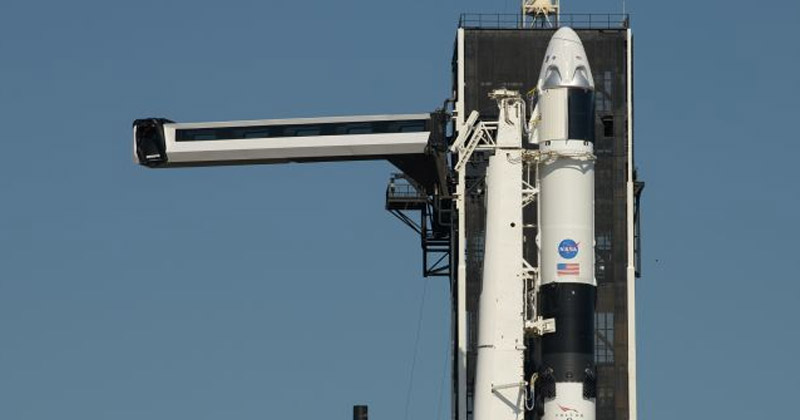Tonight, a new era in US space travel could begin because for the first time since 2011, NASA astronauts will take off again from the United States. Apart from that, it is the first manned flight by any private space company into orbit. At around 10:30 p.m. tonight two astronauts will take off in a SpaceX Dragon capsule from Cape Canaveral to the International Space Station.
The USA is a leading nation in the space race but since the end of the space shuttle program in 2011, NASA has no vehicle to transport people into space or manned space travel. The USA has been entirely dependent on Russia for sending NASA astronauts to the ISS space station.
SpaceX and Boeing instead of NASA
The United States and above all US President Donald Trump have ambitious plans in manned space travel. Under the Mission Artemis, they are planning a return to the moon in just a few years. A space station is also to be stationed in the moon orbit together with ESA. The problem, however, is transportation. NASA has been working on its own launch vehicle for years, but the Space Launch System (SLS) is making slow progress.
That’s why NASA brought private space companies like SpaceX and Boeing on board. Under the Commercial Crew Program, both companies have already developed launchers and space capsules that have been transporting cargo to the ISS for some time. In March 2019, the first test flight of a SpaceX Dragon capsule designed for manned flights to the ISS took place without the astronauts on board.

Fully automated – Astronauts would just be Passengers
NASA astronauts Robert Behnken and Douglas Hurley are on board. Both have already completed two missions with space shuttles and are therefore considered experienced astronauts. If everything goes well, they will hardly have to take any action on the flight to the ISS because the Dragon capsule is completely automated and designed to perform both the approach to the station and the docking maneuver independently.
Originally, only a ten-day stay on the ISS was planned for this first manned test flight. However, because the Dragon capsule is designed to last up to 110 days of flight and the U.S. currently only has one astronaut on the ISS. NASA is most likely to extend the duration of this test mission.
After the stay on the ISS, Behnken and Hurley will return to the Dragon capsule and it will autonomously undock from the space station. The return flight, including re-entry into the atmosphere, should also take place largely without manual intervention by the astronauts. Similar to the Apollo space capsules, the Dragon capsule then lands on parachutes in the sea. The planned landing site is located off the Atlantic coast of Florida.
If everything goes as planned on this first test flight, the first regular mission to the ISS with a Dragon capsule could follow by the end of the year. The space capsules used should then be able to remain in orbit for up to 210 days. With this success, SpaceX would certainly stand ahead in the space race being the first private company to have gotten the opportunity to launch a manned space flight.


